
Before ‘Griff The Invisible’, FSM’s effects work on feature films has been the seamless, ‘invisible’ type. Interestingly, this project about a would-be superhero who dreams of achieving invisibility and using it to fight crime, gave the team a chance to deliver effects that play a critical role in a great story.
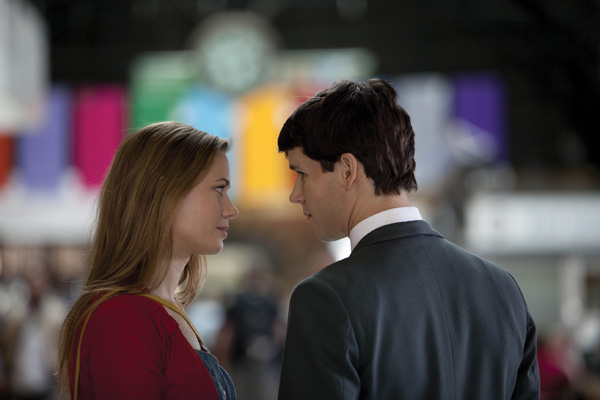 |
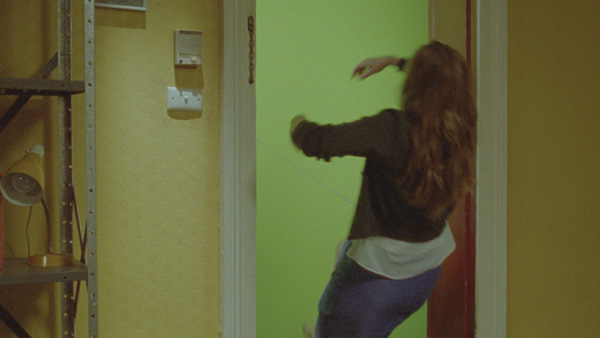 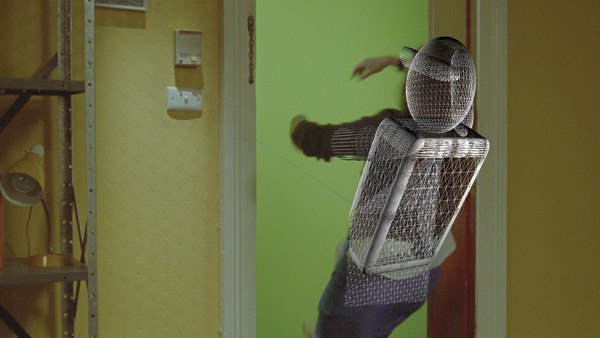 |
| The movie opens on a quote from Oscar Wilde, “Man is least himself when he talks in his own person. Give him a mask, and he will tell you the truth.” This quote soon disintegrates into a thousand particles, referring to Griff’s girlfriend Melody’s fascination with particles and physics, which reform into the glittering lights of a nighttime cityscape, while the camera pulls back through a window frame and into Griff’s flat.
City Lights The overall brief to FSM from Director Leon Ford was fairly open. His principle concern was differentiating between the looks of Griff’s two attempts at invisibility. Because his first experiment involved impregnating a white boiler suit with a homemade invisible ink made of lemon juice and baking soda, its invisibility effect needed a softer, organic look, but when Griff progresses to his electro-magnetic ‘black hole’ technology using wires, the effect needed electrical impact with an impression of something being sucked into a black hole. Plate Distortions “Due to the small budget of this project, we relied heavily on previs. We started working with Leon and the production on the best approach to visual effects for ‘Griff’ a full year ahead of the shoot. All shots and techniques were carefully worked out and tested in advance of the shoot, including camera tests prompted by concern that the night shots in the office wouldn’t provide enough light for the green suit to look green in the image. The two live action passes comprised a very low light pass with Griff wearing his white suit - plus goggles, shoes and small props that were to remain visible so that we had low light references for these - and a fully lit pass to illuminate Griff performing the same moves in his green suit. We also shot the clean plates.” Time Warp “Time warps helped ensure that these actions matched Griff’s green screen performance. The temporal plug-in Kronos from FURNACE was used to re-time any actions, such as the difference between Ryan opening the photocopier in two stages and me lifting it in one step while puppeteering from the floor. We used Flames' Stabiliser and FURNACE F-Align to align the multiple plates,” explained Phil. “Although our budget was tight, we did have time to plan these details and managed to complete the shoot efficiently. We also knew in advance that we had to allow time to pull the green screen to create the invisible look within that space, and to rotoscope the goggles and other elements.” Electro-Magnetic Thus, the composite again consisted of a clean plate shot as the door was puppeteered open, then Griff in the green screen suit, and finally Griff in his invisibility suit. In this case, the distortions were hand animated in order to control all pieces in the shot to follow his path. It was combined with an electrical zap and a sound effect, and made to look as if everything from around his body were being sucked into a tunnel – or black hole. Top Hat This was not only a complex shot but differed substantially from the previs – planned as a shot of a fist punching toward Griff’s point of view. Phil and his team had been on set every other day of the shoot except this one. News of the change came via a frantic phone call, but once the work was done everyone agreed the slow motion and particle dissolve added to the drama and communicated Griff’s transition to reality more effectively. The high action nature of this sequence, employing the flashing light and no locked off shots, required using the F_ Align plug-in as well to realign the three plates in the shot, plus hand animation to compensate for the flashing. Meanwhile, the camera was also zooming in and back out. Film Grain The grain of the 16mm film also made the chroma keying more challenging. Fortunately for the purposes of this film they didn’t need such a clean edge but were mainly after the form and shape, and were able to pick up the high and low lights in the original green screen suit to base the distortion on. Nevertheless, the tests, previs and look development all stood them in good stead. On Location Particle Physics Frame Morphing The camera position started outside the flat in the hallway in front of the door with Melody leaning back against it and a hole cut into it for her to put her head back into. Then the shot cuts to inside the flat, looking at the door from the interior as her shape starts to form as she falls through, with a slight particle effect. Then the camera returns to the hallway, to shoot her falling back toward the green screen before finally shifting back inside to shoot her complete fall to the floor. “With hindsight and a bigger budget,” Phil considered, “I would have set up a witness camera to clearly see the required angles, but by the time they were shooting the sequence, time and film stock were running out. The late decision to slow the footage later added another unexpected dimension to the job.” |
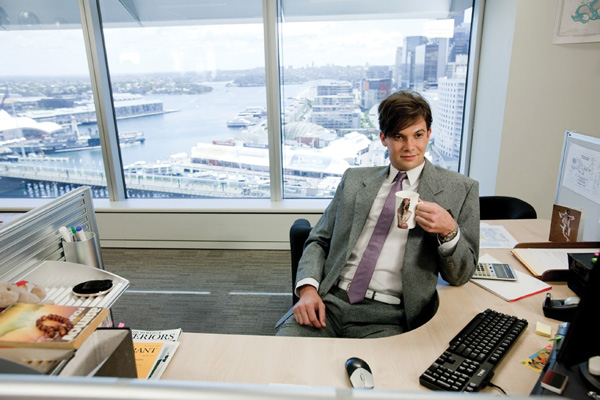 |
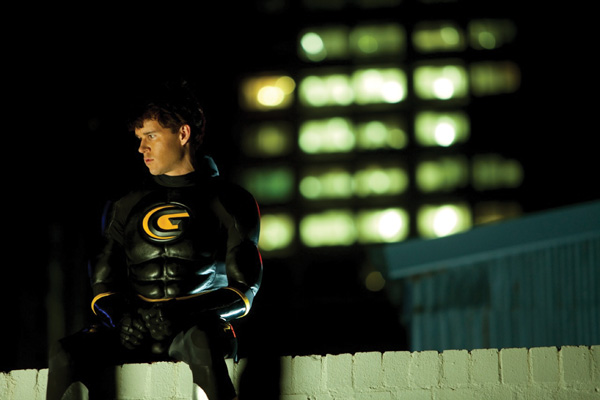 |
| Top Secret Melody secretly obtains and sends Griff a top secret ‘universe suit’ - ostensibly from a scientific research and supply company – that swirls with spinning nebulae, galaxies, stars and planets. He is thrilled. Its celestial look was an extended animation, created in Smoke. Because they wanted the shot to appear as though the suit’s light was glowing up out of the box and onto his face, using green screen in the box wasn’t possible. “Instead, we shot a clean plate to capture the empty cardboard interior of the box, and then shot Griff in front of the box with a fluorescent light inside for the interactive lighting. His hand and actions were rotoscoped from this plate as reaches out to touch the suit. We made a full animated plate of the CG ‘universe’ to use in the composite, and a real suit was also shot to help define the folds and creases to apply to the animation to complete the suit,” said Phil. “Applying the right amount of movement and swirling to this shot took several iterations, and having all the elements in place gave us the flexibility to reveal part of the box interior as he touches the suit.” Invisible World ‘Griff The Invisible’ waited quite some time for its March 2011 release after it was shot during November 2009. FSM’s first meetings with Leon Ford took place in December 2008, when they discussed feasibility, budget and what would best be achieved in-camera and using visual effects. In the end, they completed just over 70 VFX shots. “I was sometimes talking myself out of a particular task purely because we thought that, given his budget and the story, some sequences would look better shot as live action. Facing Facts Phil said, “The team’s detailed previs, testing and onset supervision were major factors in keeping to Leon’s budget. With that planning stage behind us, the DP Simon Chapman and crew were able to do all of our green screen shoots for us and understood why scenes had to be shot twice, lit two different ways. We had the two set-ups ready to go and could do the takes back to back, which helped make them as similar as possible. We had all seen the tests and knew the results we were looking for.”www.fsm.com.au |
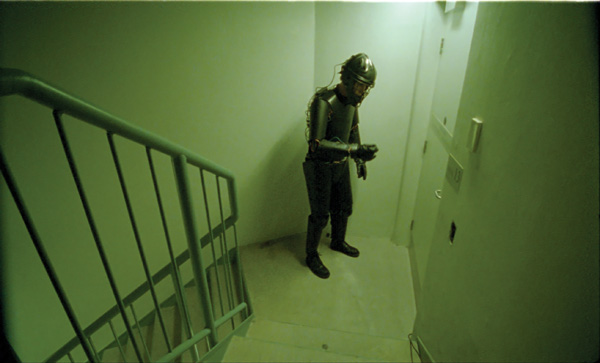 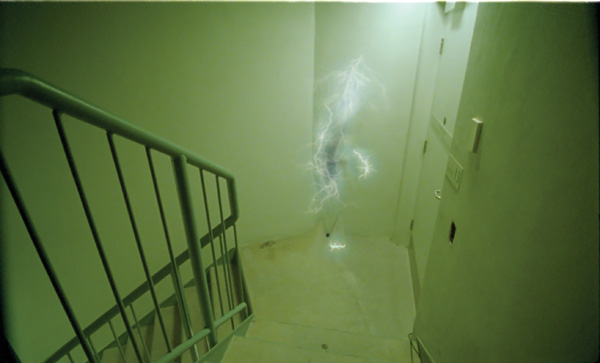 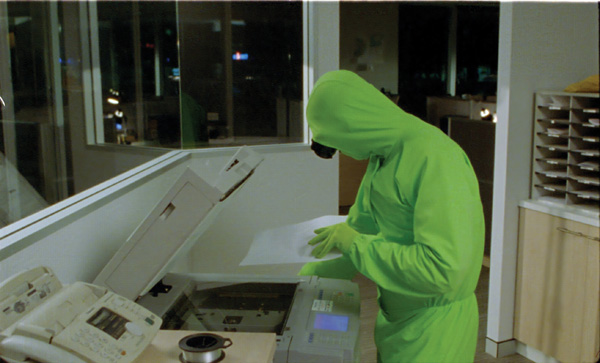 |
|
Words: Adriene Hurst MORE FEATURE ARTICLESFeatured in Digital Media World. Subscribe to the print edition of the magazine and receive the full story with all the images delivered to you. Only $79 per year. |


















